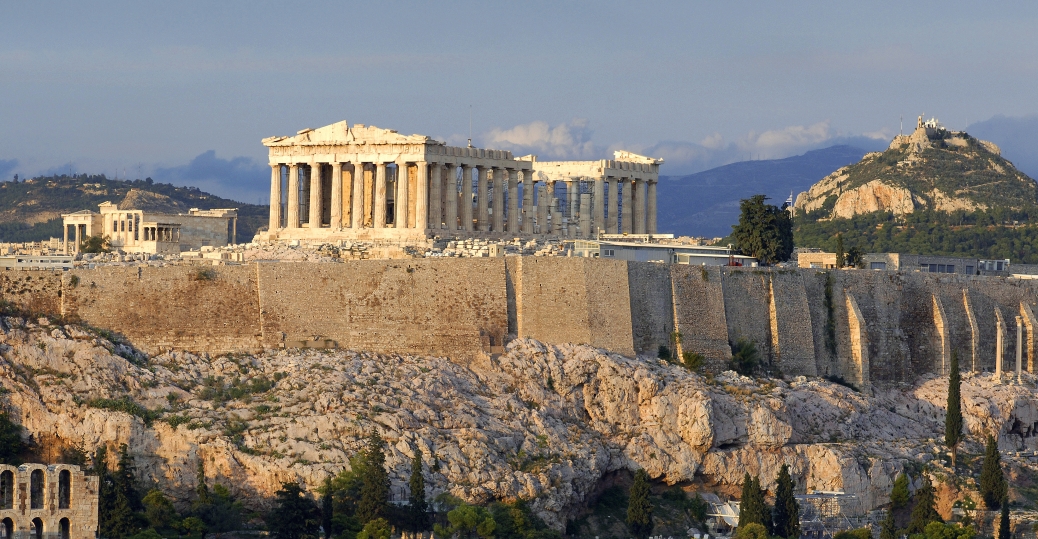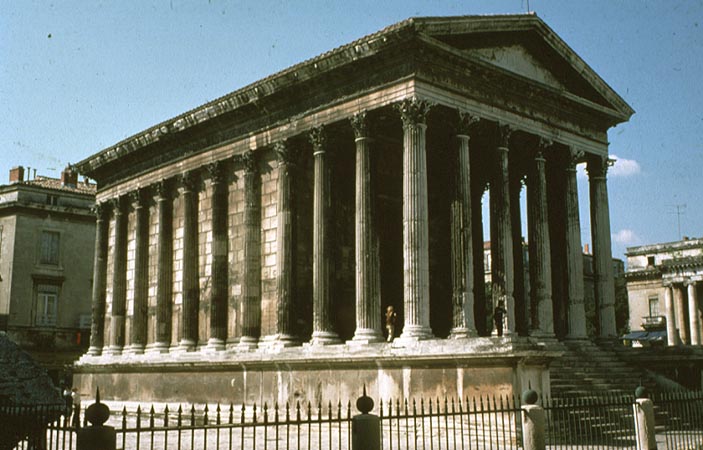In Reaction To.... in Postcards 4
- Aug. 31, 2016, 8:59 p.m.
- |
- Public
Or…A quickie course in architectural history page 1:
Or a failed attempt to write a summary of Western Architectural History in three paragraphs:
 The Acropolis in Athens, history.com
The Acropolis in Athens, history.com
In architecture, most everything grows from something else…or in reaction to something else. Usually you can follow architectural structural design from one culture to another in a line.
Unfortunately, there is a break between the, “architecture of the Mycenaean culture and Minoan cultures” to that of the ancient Greeks. “The techniques and an understanding of these styles were lost when these civilizations fell.”(1) No straight line here though stylistically some of the Minoan design elements carried forward.
Greek architecture offers a straight line, and is divided into two periods: Hellenic then Hellenistic. Towns grew around pillared temples, with marble amphitheaters and shopping areas. Their architecture inspired the Romans to adopt, “The external language of classical Greek architecture…for their purposes. The two styles are often considered one body of classical architecture.”(1)
In the 3rd century BC, Roman architecture changed with the, “Roman Architectural Revolution, also known as the Concrete Revolution.” With the use of concrete now the Roman architecture could expand with the use “of the previously little-used architectural forms of the arch, vault, and dome. For the first time in history, their potential was fully exploited in the construction of a wide range of civil engineering structures, public buildings, and military facilities. These included amphitheatres, aqueducts,baths, bridges, circuses, dams, domes, harbours, and temples.” (2)
Which leads us past the Romans to the blocky and solid Romanesque then the soaring Gothic which evolved…one of those straight lines. These two styles were followed by “Renaissance architecture, a conscious revival and development of certain elements of ancient Greek and Roman thought and material culture.” Stylistically, Renaissance architecture followed Gothic architecture and was succeeded by Baroque architecture.”(3) Suddenly, ornament became all.
 Roman temple the Maison Carree in the Nimes. Oneonta.edu.
Roman temple the Maison Carree in the Nimes. Oneonta.edu.
 A small Roman Temple, "Roman baroque", Leptis Magna, Arch of Septimus Severus. C wikipedia.
If you have read this far, just think, there will be more straight lines with a few curved lines later:
A small Roman Temple, "Roman baroque", Leptis Magna, Arch of Septimus Severus. C wikipedia.
If you have read this far, just think, there will be more straight lines with a few curved lines later:
LINKS: 1. Ancient Greek Architecture 2. Ancient Roman Architecture 3. Renaissance Architecture
Last updated September 07, 2016



Loading comments...